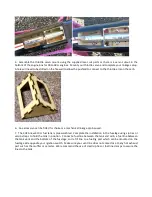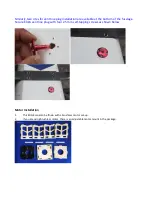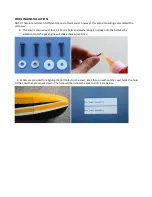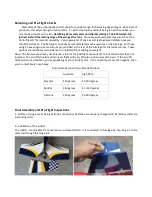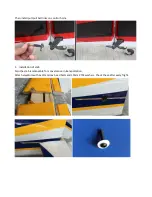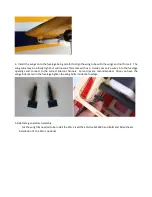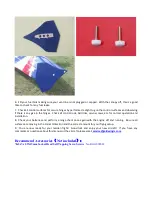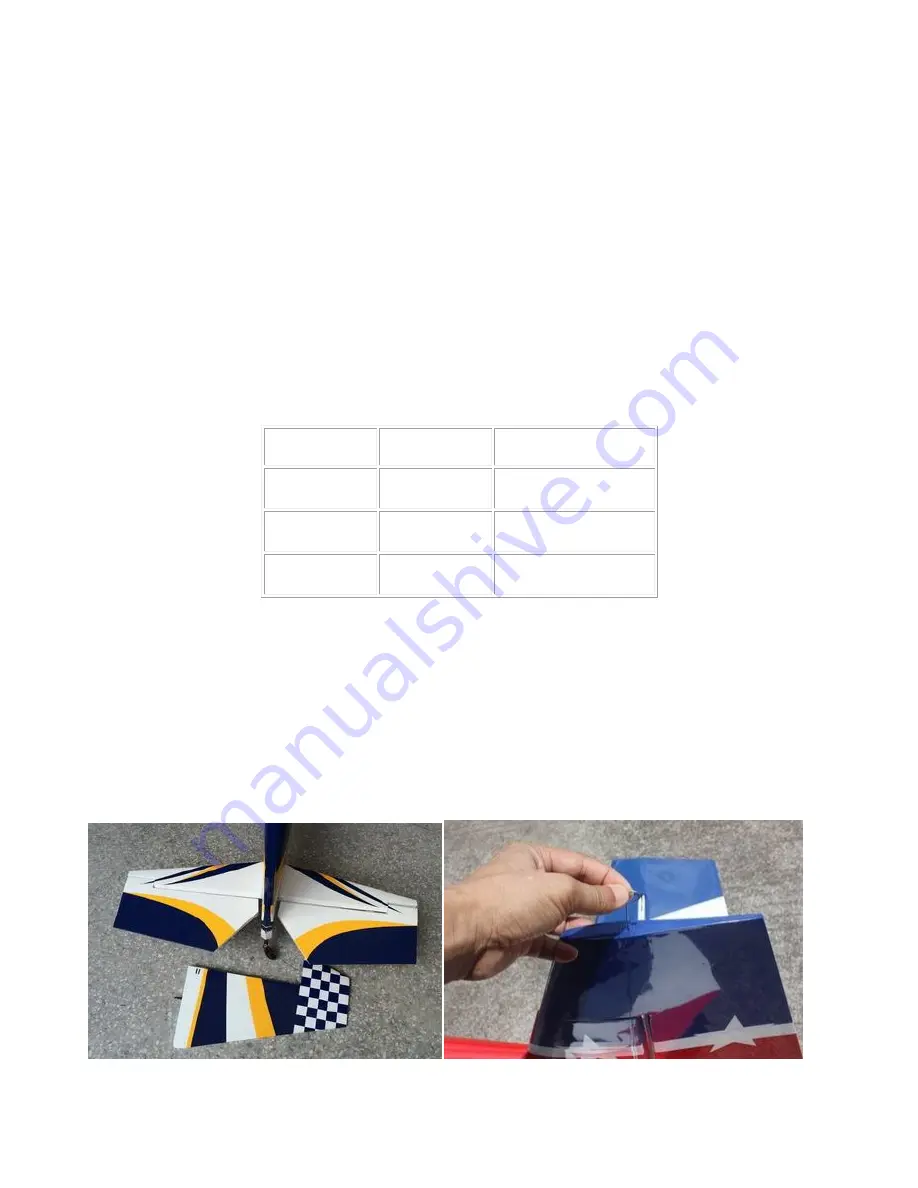
Balancing and Pre-Flight Checks
Most state of the art aerobatic aircraft allow for a wide margin for balancing depending on what level of
precision or freestyle flying the pilot prefers. To perform properly without being too pitch sensitive, you
must not go too aft on the CG. GoldWing RC recommends an initial CG setting of
102-121mm(4-4.8
inches) behind the leading edge of the wing at the root. More experienced pilots may want to set the
CG further aft for more 3D capability. Varying weights of engines and radio gear will dictate how you
should install each. The batteries can easily be located pretty much anywhere in the fuselage. For those
using a heavy engine, servo cutouts are provided in the rear of the fuselage for the rudder servos. These
options should allow you to balance the model without adding any weight.
Note: The best way to check your balance is to trim for level flight at about 1/2 to 3/4 throttle and then roll
inverted. The aircraft should maintain level flight with very little to no down elevator input. If the aircraft
climbs when inverted then you’ve probably got your CG too far aft. If the nose drops more than slightly, then
you are most likely nose heavy.
Recommended control surface deflections:
Low Rate
High Rate
Elevator
15 degrees
45-50 degrees
Rudder
25 degrees
40 - 45 degrees
Ailerons
25 degrees
35-40 degrees
Final Assembly and Pre-Flight Inspections
1. Before arriving at your flying field, be sure all your batteries are properly charged and all radio systems are
in working order.
2, Installation of the rudder
The rudder is removable for convenience in transportation, it is connected to fuselage by inserting a 1.0 mm
steel rod through the hinge line.







